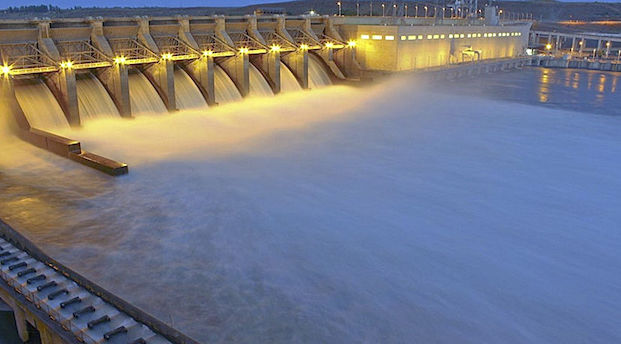forum
library
tutorial
contact

The Columbia-Snake River EIS
Meets Judgment Day
by Darryll Olsen
Capital Press, August 17, 2020
|
the film forum library tutorial contact |

|
The Columbia-Snake River EIS
by Darryll Olsen
|
The navigation analysis retains a fundamental flaw, purposefully excluding the main rail
route alternative between Lewiston-Lyons Ferry and the Columbia River (grain) ports.
 Columbia-Snake River Irrigators Association representatives are quick to affirm the central point of your Aug. 14 editorial, "Breaching Snake Dams Still Not a Good Option:" the court-ordered, Columbia River System Operations (CRSO) Environmental Impact Statement (EIS) will not cease litigation on the dam breaching question.
Columbia-Snake River Irrigators Association representatives are quick to affirm the central point of your Aug. 14 editorial, "Breaching Snake Dams Still Not a Good Option:" the court-ordered, Columbia River System Operations (CRSO) Environmental Impact Statement (EIS) will not cease litigation on the dam breaching question.
Across the page from your editorial, our media release ad stated the same, but CSRIA representatives acknowledged that key legal/technical issues imbibed by the EIS will springboard the dam breaching question back before U.S. District (OR) Judge Michael Simon.
We give the EIS high marks in dealing with the hydro power impacts and fish analyses, as the Bonneville Power Administration staff and the NOAA Fisheries' Ph.D.s do this type of technical evaluations practically on a daily basis. The same cannot be said for how the irrigation and navigation sectors were prepared, and how the overall EIS study structure led to both technical and legal problems, soon to be flogged in Judge Simon's Court.
Your OpEd unintentionally carried forward inaccurate irrigation impact numbers from the EIS, where the USBR Denver Technical Center refused to account for the total irrigated acres affected by dam breaching -- most notably ignoring the changed river shoreline and silt/debris impacts below the Ice Harbor Dam tailrace, along the shallow-water Upper McNary Pool area (the total impact would affect about 91,000 acres, not 47,000 acres). They also used the wrong economic metric for market value -- tax assessments are not market value transactions. The navigation analysis retains a fundamental flaw, purposefully excluding the main rail route alternative between Lewiston-Lyons Ferry and the Columbia River (grain) ports. This analysis will have to be redone by others.
Even as an ESA litigation defendant-intervenor, CSRIA had to prod the EIS technical managers to make some much needed pre-draft changes; but this effort did not override the EIS managers' zealousness for a "Joe Biden, hide-in-the-basement" approach to presenting the EIS alternatives and avoiding technical review committees (that had been successfully employed in the past).
Technical issues aside, the CRSO agencies did the EIS process no favors by limiting the Lower Snake River hydro system alternatives or by making no effort to include within the EIS a "regional alternative," now nonchalantly referred to as being a task for "the next step."
The above EIS omissions and idiosyncrasies mean that scrutiny before Judge Simon's Court is rapidly approaching -- and the region is emotionally and rationally ill-prepared for Judgment Day. Alas, if only the agency staff, scientists, planners, fish advocates, and elected representatives had more time to go through another regional process, we could find redemption.
Right?
It will take a more deliberate action plan to avoid being cast into the legal infernal. A small, but thoughtful, stakeholder coalition could address the EIS frailties and compose a plan adopting a near-term implementation protocol. There has been enough time, enough technical information, enough legal review, and enough debate dancing. Purgatory need not be followed by Hell.
learn more on topics covered in the film
see the video
read the script
learn the songs
discussion forum
